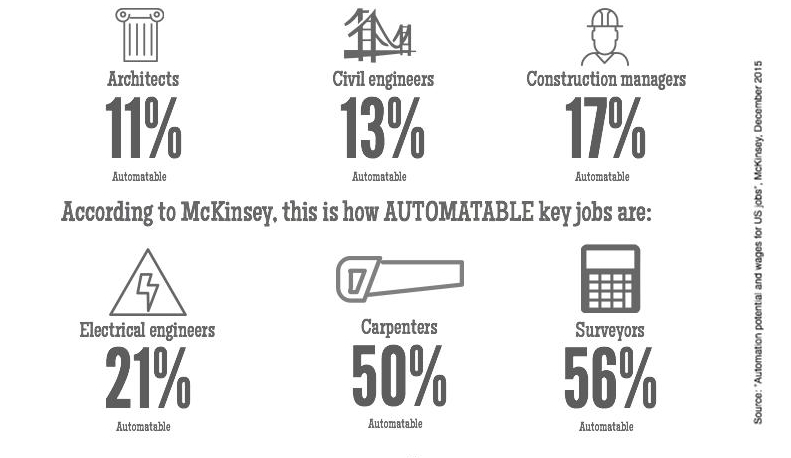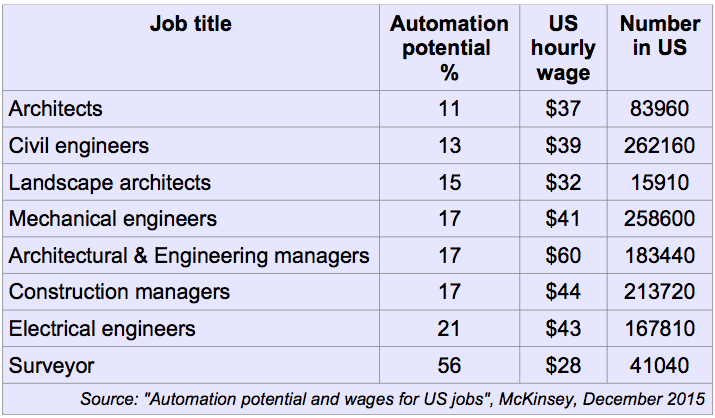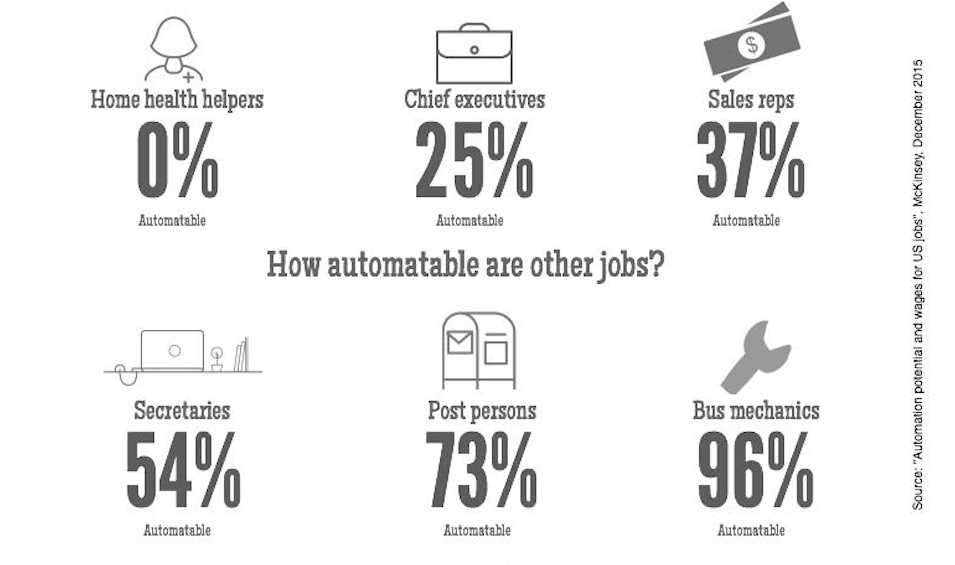Of all professions in the built environment sector, architects have the least reason to worry about being replaced by robots.
Automation is likely to change the vast majority of occupations-at least to some degree-which will necessitate significant job redefinition and a transformation of business processes– A report by McKinsey
That’s because only 11% of what they spend time on can be automated, according to the results of a study released this week.
But surveyors should be watching their backs, because more than half of what they do, by time – 56% – could be performed by automation techniques described as “currently demonstrated”.
Managers of construction and engineering are still fairly safe, with their functions coming in at around 17% replaceable by machines, but carpenters are vulnerable, with an estimated 50% of their functions deemed “automatable”.
The study, by consulting firm McKinsey, analysed the detailed work activities for more than 750 occupations in the US to estimate the percentage of time that could be automated.

How “automatable” are key built-environment occupations? (Graph by GCR)
It found that very few occupations will be automated completely any time soon, but the research did suggest that as many as 45% of all activities people get paid to do could be automated by adapting currently demonstrated technologies.
In the US, those “automatable” activities represent about $2 trillion in annual wages.
But surveyors needn’t really worry. Researchers concluded that fewer than 5% of occupations can be done entirely by robots as things stand now.
Jobs will change, however. McKinsey analysts found that 60% of occupations could have 30% or more of their constituent activities automated.

A fuller picture of built environment occupations, pay and “automatability”
“In other words, automation is likely to change the vast majority of occupations-at least to some degree-which will necessitate significant job redefinition and a transformation of business processes,” conclude the report authors, Michael Chui, James Manyika, and Mehdi Miremadi.
Mortgage-loan officers, for instance, will spend less time processing paperwork and more time reviewing exceptions and advising clients.
Interestingly, the report challenges a common perception that low-skill, low-wage roles are ripest for robotics. Researches discovered that even the highest-paid occupations in the economy, such as financial managers, physicians, and even CEOs spend a lot of time on tasks that could be automated.

Low pay doesn’t mean replaceable by robots (Graph by GCR)
The researchers analysed around 2,000 individual work activities, mapping them to 18 different capabilities they felt could potentially could be automated.
Those capabilities ranged from fine motor skills to navigating in the physical world, and even to sensing human emotion and producing natural language.
See all occupations here.
Top photograph: “Asimo”, revealed by Honda in 2005, is the most advanced humanoid robot ever created, Honda claims. But it can’t design a building (Honda)
Comments
Comments are closed.







Robots replacing humans and printers printing out building elements, where is this going. Lots of unemployment? then nobody will have money to buy any of the automated products.
Well, I reckon a robot could design a building but here is a problem that would have to be overcome first.
Who could possibly come up with the software to adequately programme the robot?
Building design is not the same as chess that playing within the square board.
Programming, re updating codes and human feeling attach to the design that is not programable.